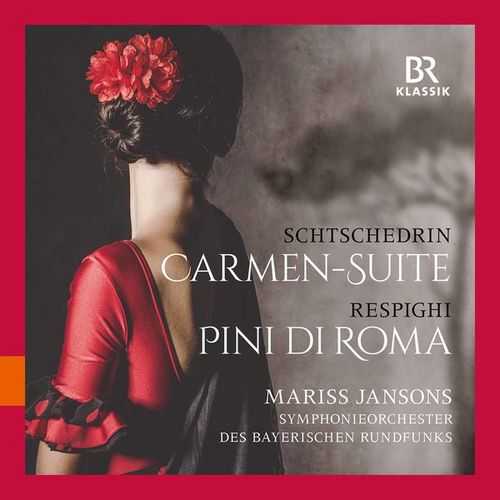
Composer: Rodion Shchedrin, Ottorino Respighi
Orchestra: Symphonie-Orchester des Bayerischen Rundfunks
Conductor: Mariss Jansons
Audio CD
Number of Discs: 1
Format: FLAC (tracks)
Label: BR Klassik
Size: 664 MB
Recovery: +3%
Scan: yes
Shchedrin, Rodion (b.1932):
Carmen Suite
01. I. Introduction
02. II. Dance
03. III. Intermezzo I
04. IV. Changing of the Guard
05. V. Carmen’s Entrance & Habanera
06. VI. Scene
07. VII. Intermezzo II
08. VIII. Boléro
09. IX. Torero
10. X. Torero und Carmen
11. XI. Adagio
12. XII. Fortune Telling
13. XIII. Finale
Respighi, Ottorino (1879-1936):
Pines of Rome
14. I. I pini di Villa Borghese (Live)
15. II. Pini presso una catacomba (Live)
16. III. I pini del Gianicolo (Live)
17. IV. I pini della Via Appia (Live)
This new CD from BR-KLASSIK features the ballet music ‘Carmen Suite’, based on the famous melodies from George Bizet’s eponymous opera and masterfully arranged and adapted by the composer Rodion Shchedrin in 1968, and Ottorino Respighi’s well-known symphonic poem ‘Pini di Roma’ (The Pines of Rome), written in 1924. The name of the Russian composer Rodion Shchedrin is primarily associated in the West with his ‘Carmen Suite’, which has been highly popular ever since its first performance. The thirteen movements of this ballet music are based on Bizet’s opera Carmen, and carefully adapted to the musical language of the present day. After Shchedrin’s wife Maya Plisetskaya, long-time prima ballerina of the Bolshoi Theatre, had vainly asked both Shostakovich and Khachaturian to compose a Carmen ballet especially for her, her husband decided to do so instead – a decision that was rewarded with international success. The rousing music in Shchedrin’s interpretation sounds very familiar, yet in many ways, entirely new! The Italian composer Ottorino Respighi is especially admired for his masterly instrumentation. The symphonic poems in his ‘Roman Trilogy’, which deal with the fountains, pine trees and festivals of his adopted home city of Rome, made his name immortal. In his ‘Pines of Rome’ he describes four locations in the Eternal City, each with a different historical background.



